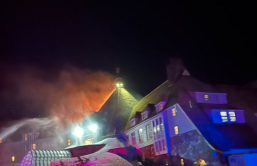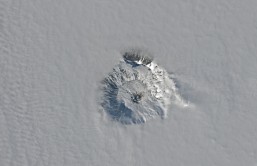The International Space Station (ISS) avoided hair-thin disaster when one of the docking modules could have placed it out of control. Since the construct in space comprises several units, firing all vector thrusters must be coordinated to avoid damage to the superstructure.
On Thursday, the arrival of the module belonging to Russia became the source of the problem in the earth's orbit.
According to NASA, the 22-ton Nauka research module had misfired its thrusters while connected to the station. For a few moments, it was out of control; but the structure was stabilized eventually.
The Nauka's unexpected activation caused alarm in the ISS
It is one of the many modules in one of the most sophisticated permanent space outposts after Sky Lab that fell from orbit on July 11, 1979.
Specs say the Nauka was a research module for storage and with an airlock equipped. It docked with the ISS on Thursday at 9:29 am EDT, reported the Daily Mail.
Nauka's safe docking was reported by NASA last Thursday, well before the disaster, via Twitter.
Three hours after the lab unit has connected to the main station, its thrusters were activated unexpectedly, said the flight control team on the space outpost, remarked National Aeronautics and Space Administration (NASA).
Critical to keeping the space station in orbit is a regular altitude or gravity that will affect its position. Sources say that its relative position to the trajectory of its travel was changed by 45 degrees and one-eighth of a complete circle.
Having a constant position for the station is how the solar panels charge, which is essential. If there is no power to adjust the station, its orbit will decay and crash down to earth. The International Space Station (ISS) avoided a hair-thin disaster this time that could have been worse.
Probable cause of the ISS mishap
According to the RIA of Russia, who mentioned the specialists based in Johnson Space Center in Houston, called the pull of the Nauka and the connected module a deadly tug of war.
The space agency said that all the seven multi-national astronauts, with one European space agency astronaut from France, had not been in any real danger.
Statements from concerned agencies say that the ground team has restored altitude control, with the stability of the ISS restored.
A probable cause of the thrusters malfunctioning has not been determined yet; even Roscosmos, an equivalent of NASA, confirmed its western counterpart.
Following this morning's docking of the Nauka module to the @Space_Station, the module's thrusters started firing at 12:45pm ET inadvertently and unexpectedly, moving the station 45 degrees out of attitude. Recovery operations have regained attitude and the crew is in no danger: pic.twitter.com/jFlDZD7ZHp
— NASA (@NASA) July 29, 2021
It caused a setback to the NASA launch of Boeing's new CST-100 Starliner capsule, which has no crew onboard. The scheduled launch date will be moved not earlier than August 3.
This Boeing space vehicle has room for seven inside it, travels to space from a low-earth orbit. Transporting it to space is the Atlas V rocket booster on July 30 from Florida in the Kennedy Space Center.
Relative position adjustment of the ISS might have caused the drift
Extra information about the circumstances of the error state that the misfiring happens while Russian mission controllers were doing post dock procedures. When the thrusters were on, they change the position relative to the earth's orbit.
Change in relative position about 250 miles over the earth prompted a declaration of an emergency in space, said NASA, cited by Business World.
Ground sensors first noticed a drift; then, for 15-minutes, the ISS lost some height in a 45-minute duration, said Manager Joel Montalbano, NASA space station program.
NASA was able to correct its course; the International Space Station (ISS) avoided hair-thin disaster in time. There are dangers in space, as shown by these experiences.
Related Article: Chinese Astronauts of Tiangong Station Executes First Space Walk, Stayed Out for Seven Hours Working








